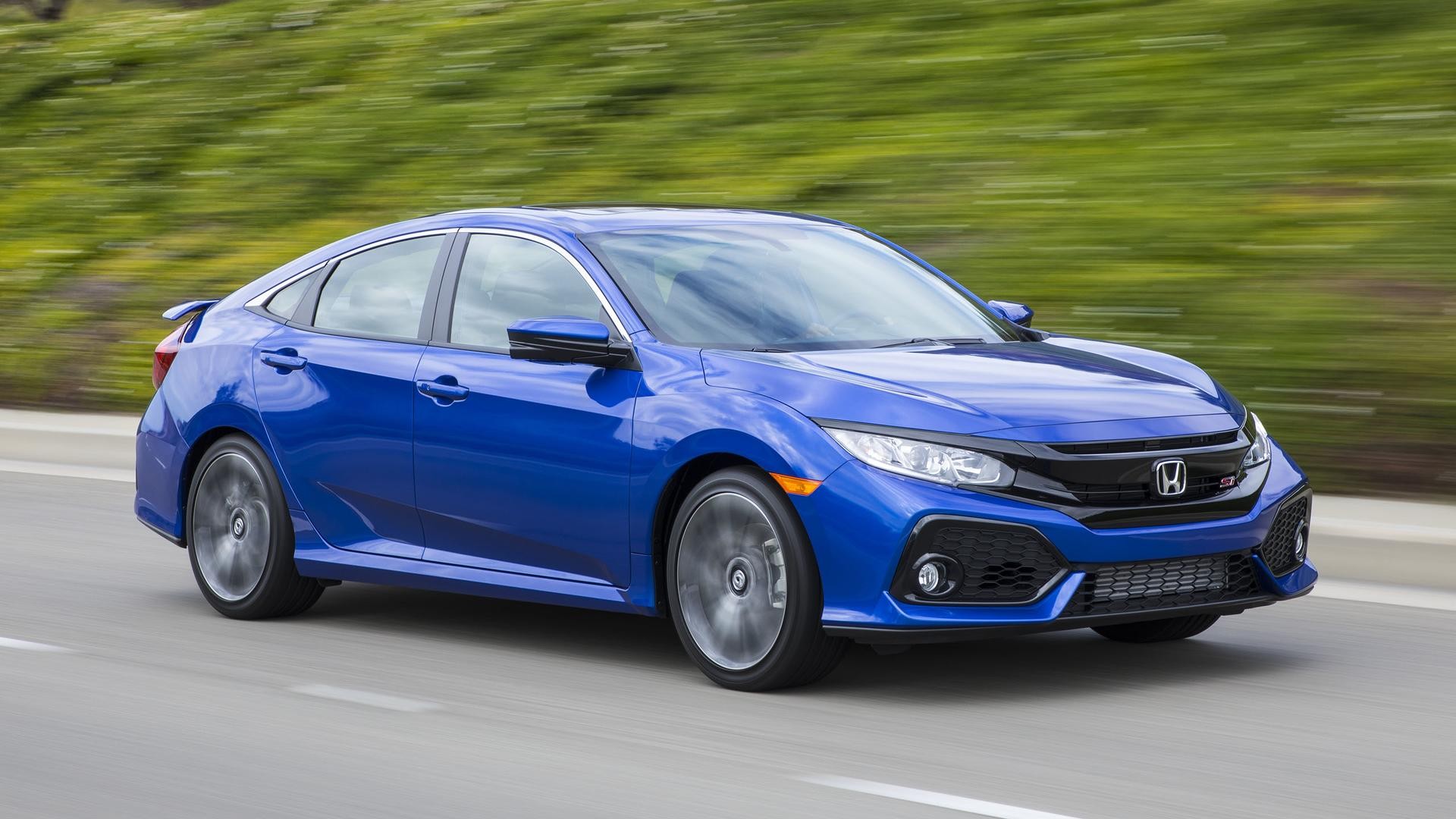Modern automotive lighting technology has undergone a revolutionary transformation, fundamentally changing how drivers experience nighttime visibility and safety.
The automotive industry has evolved from simple incandescent bulbs to sophisticated adaptive lighting systems that can intelligently respond to driving conditions, weather patterns, and traffic scenarios in real-time.
This technological leap represents one of the most significant advances in automotive safety equipment over the past decade. Adaptive headlights, also known as intelligent or smart headlights, utilize advanced sensors, cameras, and computer algorithms to automatically adjust beam patterns, intensity, and direction based on various factors, including vehicle speed, steering input, ambient light conditions, and the presence of oncoming traffic.
These systems can pivot left and right as drivers navigate curves, automatically switch between high and low beams, and even mask specific areas of the light pattern to avoid blinding other drivers while maintaining maximum illumination of the road ahead.
The static headlight systems maintain a fixed beam pattern and direction, relying on driver input to switch between high and low beam settings. While these traditional systems may seem outdated compared to their adaptive counterparts, modern static LED and xenon headlights still offer exceptional performance, reliability, and value.
Many vehicles equipped with high-quality static lighting systems provide excellent visibility and safety features at a more accessible price point than adaptive systems.
The choice between adaptive and static headlight systems often comes down to driving preferences, budget considerations, and the specific needs of individual drivers. Both technologies have distinct advantages and applications that make them suitable for different driving scenarios and vehicle types.
5 Cars with Adaptive Headlights
These sophisticated lighting systems feature intelligent technology that automatically adjusts beam patterns and direction based on steering input, vehicle speed, weather conditions, and oncoming traffic detection.
Their advanced matrix LED arrays can selectively dim individual sections while maintaining maximum illumination in safe zones, creating precise light distribution that adapts in real-time to driving conditions.
The systems utilize sophisticated sensors and computer algorithms to continuously monitor road conditions, automatically switching between high and low beams while steering the light pattern through corners and around obstacles.
These vehicles deliver enhanced nighttime safety with intelligent beam management that maintains optimal visibility without blinding other drivers.
Drivers experience dramatically improved nighttime visibility with beams that literally follow the road ahead, illuminating upcoming turns before the vehicle enters them and providing superior depth perception during challenging nighttime driving scenarios.
1. BMW 5 Series (2024-2025)
The BMW 5 Series stands as a pinnacle of automotive lighting technology, featuring one of the most sophisticated adaptive headlight systems available in the luxury sedan segment.
The BMW 5 Series with its luxurious meets performance philosophy is making adaptive headlights standard on all of its 2024 models. This comprehensive integration demonstrates BMW’s commitment to making advanced safety technology accessible across their model range rather than limiting it to premium trim levels.
BMW’s adaptive headlight system in the 5 Series incorporates multiple cutting-edge technologies working in harmony to provide unparalleled nighttime visibility.
The system features dynamic beam control that continuously adjusts the light pattern based on driving conditions, speed, and steering input. When navigating winding roads, the headlights pivot up to 15 degrees in the direction of travel, illuminating the path ahead before the vehicle turns.
This predictive lighting capability significantly reduces the risk of accidents on curvy mountain roads or winding country lanes where visibility around corners is traditionally limited.
The system also includes intelligent high-beam assist that uses cameras to detect oncoming traffic and automatically switches between high and low beams without driver intervention.
More impressively, the BMW 5 Series features selective beam masking technology that can dim specific portions of the light pattern to avoid blinding oncoming drivers while maintaining full illumination of unoccupied road areas.
This selective masking is achieved through an array of individually controlled LED elements that can be activated or deactivated in milliseconds. Weather-responsive lighting is another standout feature of the BMW 5 Series adaptive system.
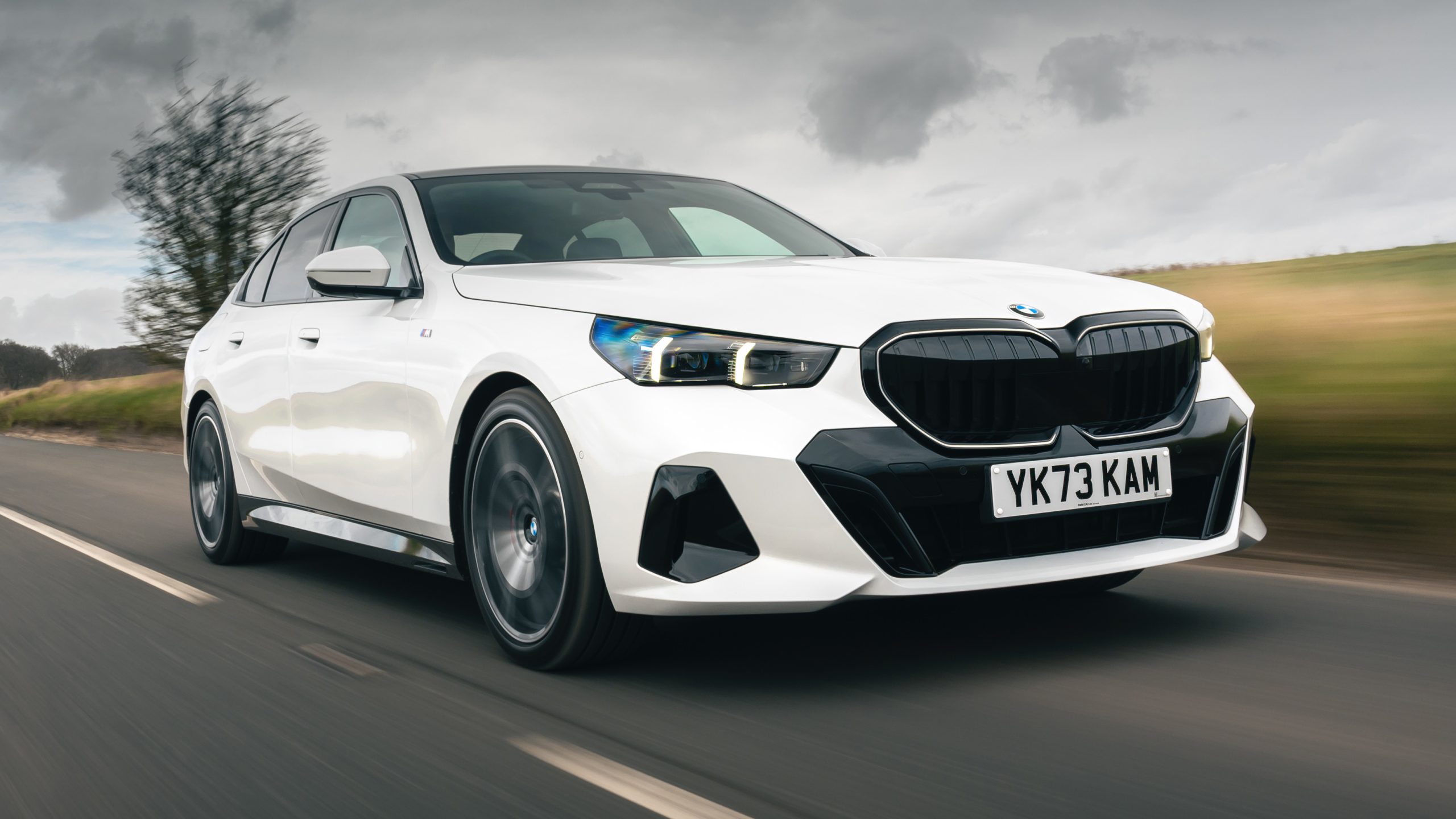
The headlights can detect rain, fog, or snow conditions and automatically adjust beam patterns to minimize glare and reflection while maximizing road surface visibility.
In foggy conditions, the system lowers the beam pattern and increases spread to improve visibility of road markings and obstacles. During heavy rain, the lights adjust to reduce reflection from wet pavement that could otherwise impair driver vision.
The BMW 5 Series adaptive headlights also integrate with the vehicle’s navigation system to provide anticipatory lighting adjustments. When approaching highway exits, construction zones, or areas with known lighting challenges, the system can pre-adjust beam patterns based on stored map data.
This proactive approach to lighting management represents a significant advancement in automotive safety technology. Energy efficiency is another notable aspect of the BMW 5 Series lighting system.
Despite the advanced functionality, the LED-based adaptive headlights consume significantly less power than traditional halogen or even xenon systems while providing superior light output and longevity.
The LED elements are rated for the life of the vehicle, eliminating the need for regular bulb replacements and reducing long-term ownership costs.
The user interface for controlling the BMW 5 Series adaptive headlights is intuitive and comprehensive. Drivers can access various lighting modes through the vehicle’s infotainment system, including comfort, sport, and eco modes that adjust lighting behavior to match driving preferences.
The system also provides real-time feedback about lighting adjustments, allowing drivers to understand how the technology is working to improve their visibility and safety.
2. Audi A6 (2024-2025)
The Audi A6 represents the forefront of German engineering excellence in adaptive lighting technology, featuring what many consider to be the most advanced matrix LED headlight system available in the premium sedan market.
Drivers can opt for matrix LED adaptive headlights on the Audi A6. This optional system transforms the traditional concept of automotive lighting into a dynamic, intelligent safety feature that adapts to virtually any driving scenario.
Audi’s matrix LED technology in the A6 utilizes an array of individually controllable LED elements that can create thousands of different light patterns.
Each headlight contains multiple LED modules that can be independently activated, dimmed, or deactivated to create precisely tailored illumination patterns.
This granular control allows the system to provide optimal lighting for specific driving conditions while avoiding interference with other road users.
The adaptive capabilities of the Audi A6’s lighting system extend far beyond simple beam steering. The system incorporates predictive lighting technology that uses GPS data, road topology information, and real-time traffic data to anticipate lighting needs before they arise.
When approaching a curve, the system begins adjusting the beam pattern before the driver even begins to turn the steering wheel, ensuring optimal visibility throughout the entire cornering maneuver.
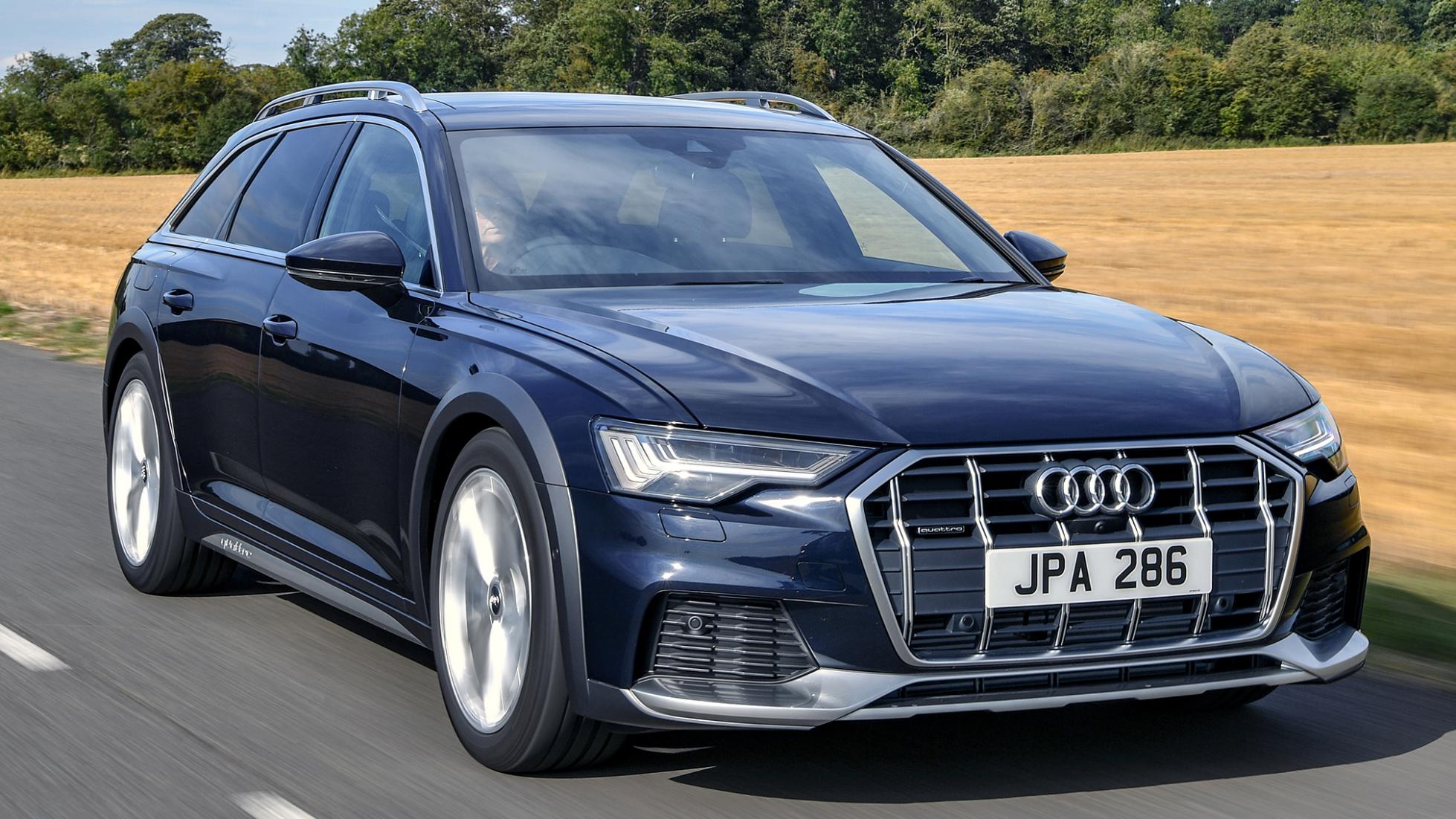
One of the most impressive features of the Audi A6’s adaptive system is its ability to create what Audi calls “light carpets” precisely shaped illumination patterns that can highlight specific areas of the road while leaving others in relative darkness.
This capability is particularly useful in urban environments where the system can illuminate crosswalks, road signs, and potential hazards while avoiding glare for pedestrians and other drivers.
The Audi A6’s lighting system also incorporates advanced communication capabilities that allow it to interact with other vehicles and infrastructure.
When equipped with Audi’s Car-to-X technology, the headlights can receive information about road conditions, traffic patterns, and hazards from other connected vehicles and roadside infrastructure. This information is then used to proactively adjust lighting patterns to improve safety and visibility.
Weather adaptation is another strength of the Audi A6’s adaptive headlight system. The lights can automatically detect and respond to various weather conditions, adjusting beam patterns, intensity, and color temperature to optimize visibility.
In snowy conditions, the system can increase the width of the beam pattern and adjust the cutoff line to better illuminate the road surface and snow-covered lane markings.
During foggy conditions, the lights automatically switch to a lower, wider beam pattern that reduces reflection and improves penetration through the fog.
The integration of the Audi A6’s adaptive headlights with the vehicle’s driver assistance systems creates a comprehensive safety ecosystem. The lighting system works in conjunction with adaptive cruise control, lane departure warning, and collision avoidance systems to provide coordinated safety interventions.
For example, when the collision avoidance system detects a potential hazard, the headlights can automatically increase illumination in that area to help the driver better assess the situation.
Customization options for the Audi A6’s adaptive lighting system are extensive, allowing drivers to tailor the system’s behavior to their preferences and driving style.
Through the vehicle’s MMI infotainment system, drivers can adjust sensitivity settings, select different lighting modes for various driving scenarios, and even customize the welcome and goodbye lighting sequences that activate when approaching or leaving the vehicle.
3. Mercedes-Benz S-Class (2024-2025)
The Mercedes-Benz S-Class has long been recognized as the pinnacle of luxury automotive technology, and its adaptive headlight system continues this tradition of excellence.
Mercedes-Benz’s Intelligent Light System (ILS) in the S-Class represents one of the most comprehensive and sophisticated lighting solutions available in the automotive market today.
This system goes beyond traditional adaptive lighting to provide a truly intelligent illumination experience that anticipates and responds to driving conditions with unprecedented precision.
The Mercedes-Benz S-Class adaptive headlight system features multiple lighting modes that automatically activate based on driving conditions and driver preferences.
The system includes country mode for rural driving, motorway mode for highway travel, city mode for urban environments, and enhanced fog mode for adverse weather conditions. Each mode optimizes the light pattern, intensity, and distribution to provide the best possible visibility for specific driving scenarios.
One of the most innovative features of the Mercedes-Benz S-Class lighting system is its ability to project information directly onto the road surface.
The system can display navigation arrows, speed limit warnings, and other relevant information directly in the driver’s line of sight on the road ahead.
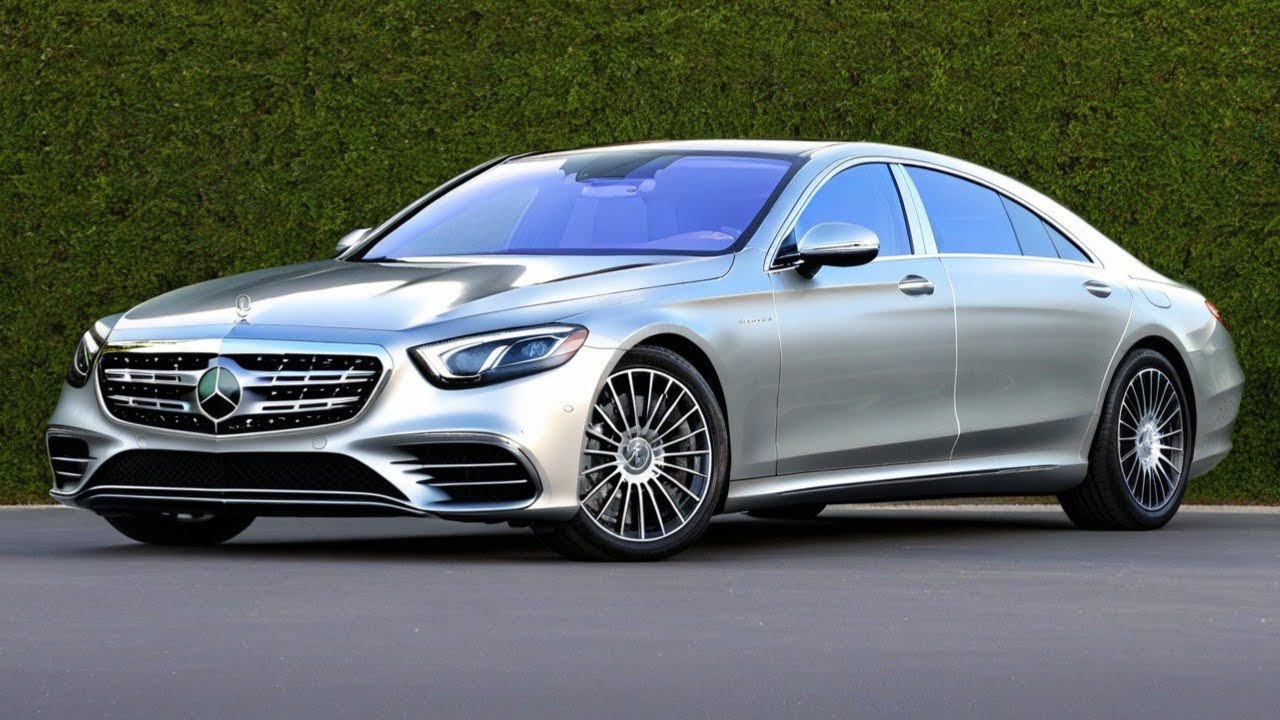
This projection capability not only enhances convenience but also improves safety by keeping the driver’s attention focused on the road rather than on dashboard displays.
The adaptive curve illumination feature in the Mercedes-Benz S-Class is particularly impressive, utilizing both mechanical and electronic steering of the light beam to provide optimal visibility around corners.
The system can pivot the headlights up to 15 degrees in either direction while simultaneously adjusting the vertical aim and beam pattern to account for changes in road elevation and vehicle loading.
This comprehensive approach to curve illumination ensures that drivers can see potential hazards well before they would be visible with traditional fixed headlights.
Mercedes-Benz’s attention to detail extends to the S-Class’s cornering lights, which automatically activate when turning at low speeds or when parking.
These additional light sources illuminate the area to the side of the vehicle, making it easier to navigate tight parking spaces and see pedestrians or obstacles that might be outside the main headlight beam pattern.
The cornering lights work in conjunction with the main adaptive system to provide 360-degree illumination coverage around the vehicle. The Mercedes-Benz S-Class also features advanced glare-free high beam technology that uses a mechanical shade system to block portions of the light beam that would otherwise blind oncoming drivers.
This system can create multiple shadow zones simultaneously, allowing the driver to use high beams even in heavy traffic while maintaining consideration for other road users.
The precision of this masking system is remarkable, often creating shadows that precisely outline oncoming vehicles while maintaining full illumination of the surrounding road surface.
Weather-responsive lighting in the Mercedes-Benz S-Class includes specialized modes for rain, snow, and fog conditions. The rain mode adjusts the beam pattern to reduce glare from wet road surfaces while maintaining adequate illumination of lane markings and road signs.
Snow mode increases the width of the beam pattern and adjusts the cutoff line to better illuminate snow-covered surfaces. Fog mode creates a wide, low beam pattern that improves visibility without creating excessive reflection.
The integration of the Mercedes-Benz S-Class adaptive lighting system with the vehicle’s numerous driver assistance features creates a comprehensive safety network.
The system works closely with the active brake assist, attention assist, and traffic sign recognition systems to provide coordinated safety interventions. When the attention assist system detects driver fatigue, the lighting system can automatically increase illumination intensity to help maintain alertness.
4. Toyota Camry Hybrid (2024-2025)
The Toyota Camry Hybrid represents an excellent example of how adaptive headlight technology has become more accessible and mainstream, bringing advanced lighting capabilities to the mid-size sedan segment.
The 2024 Toyota Camry models feature optional adaptive headlights as part of their reliability-focused design. This integration of sophisticated lighting technology into Toyota’s reliability-focused philosophy demonstrates the company’s commitment to making advanced safety features available to a broader range of consumers.
Toyota’s approach to adaptive headlights in the Camry Hybrid emphasizes practical functionality and long-term reliability over flashy features. The system focuses on providing consistent, dependable performance that enhances safety without overwhelming drivers with complex controls or settings.
This philosophy aligns perfectly with Toyota’s reputation for building vehicles that deliver years of trouble-free operation while incorporating meaningful technological advancements.
The adaptive headlight system in the Toyota Camry Hybrid features automatic high beam switching that uses a camera-based detection system to identify oncoming traffic and automatically switches between high and low beams.
This system operates seamlessly in the background, allowing drivers to focus on the road while ensuring they always have optimal illumination without creating glare for other drivers.
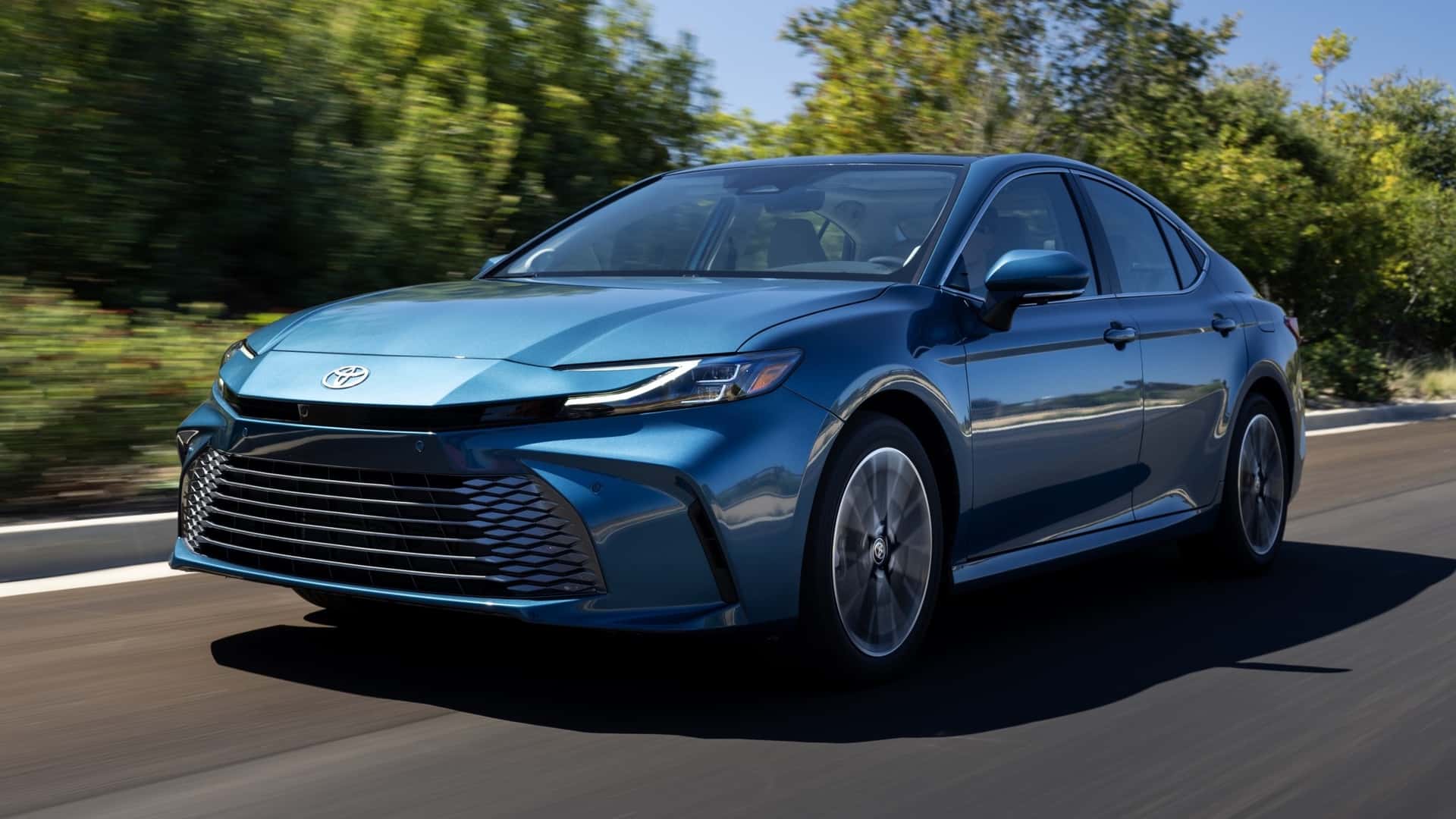
The sensitivity of the detection system can be adjusted through the vehicle’s settings menu to accommodate different driving preferences and conditions.
Curve-adaptive lighting is another key feature of the Toyota Camry Hybrid’s adaptive system. The headlights can pivot up to 10 degrees in the direction of travel when navigating curves, providing improved visibility around corners and reducing the risk of accidents on winding roads.
The system responds to steering input and vehicle speed to determine the appropriate amount of light steering, ensuring that the illumination always follows the vehicle’s intended path.
The Toyota Camry Hybrid’s adaptive headlights also include a cornering light function that activates additional illumination when turning at low speeds.
This feature is particularly useful when navigating parking lots, driveways, or urban intersections where visibility to the sides of the vehicle is important. The cornering lights work in conjunction with the turn signals to provide enhanced visibility in the direction of travel.
LED technology forms the foundation of the Toyota Camry Hybrid’s adaptive lighting system, providing excellent light output with superior energy efficiency compared to traditional halogen bulbs.
The LED headlights produce a bright, white light that closely mimics natural daylight, improving color recognition and reducing eye strain during nighttime driving. The long lifespan of LED technology also means that owners can expect years of reliable operation without the need for bulb replacements.
The Toyota Camry Hybrid’s adaptive headlight system integrates seamlessly with the vehicle’s comprehensive Toyota Safety Sense 2.0 suite of driver assistance features.
The lighting system works in coordination with the pre-collision system, lane departure alert, and dynamic radar cruise control to provide a comprehensive safety network.
When the pre-collision system detects a potential hazard, the headlights can automatically increase illumination in that area to help the driver better assess the situation.
Ease of use is a hallmark of the Toyota Camry Hybrid’s adaptive lighting system. The system operates automatically in most situations, requiring minimal input from the driver.
The controls are intuitive and easily accessible, with clear indicators on the dashboard showing the current lighting mode and status. This user-friendly approach ensures that drivers can take full advantage of the system’s capabilities without needing extensive training or familiarization.
The Toyota Camry Hybrid’s adaptive headlights also feature a thoughtful approach to energy management, automatically adjusting light output based on driving conditions and battery status.
During electric-only operation, the system optimizes energy consumption to maximize electric driving range while maintaining adequate illumination. This intelligent energy management contributes to the vehicle’s overall efficiency and environmental friendliness.
Also Read: 5 Brands With Top Security Ratings and 5 With Zero Theft Prevention Focus
5. Lexus RX (2024-2025)
The Lexus RX represents the luxury division of Toyota’s commitment to advanced lighting technology, offering one of the most sophisticated adaptive headlight systems available in the luxury SUV segment.
Ultimately, my objective is to get the adaptive high-beam system on my new RX, like the ones available in the higher trim levels, which demonstrates the desirability and effectiveness of these advanced lighting systems among discerning luxury vehicle buyers.
Lexus has equipped the RX with their Intelligent High Beam (IHB) system, which represents a significant advancement over traditional automatic high beam systems.
The IHB system uses an advanced camera to continuously monitor the road ahead and can detect oncoming vehicles, preceding vehicles, and even streetlights to make intelligent decisions about when to use high beams.
The system can also recognize different types of light sources and adjust its behavior accordingly, avoiding unnecessary switching that could be distracting to the driver.
The adaptive front lighting system (AFS) in the Lexus RX provides dynamic beam control that adjusts both horizontally and vertically based on driving conditions.
The horizontal adjustment allows the headlights to follow the vehicle’s path around curves, while vertical adjustment compensates for vehicle loading and road elevation changes.
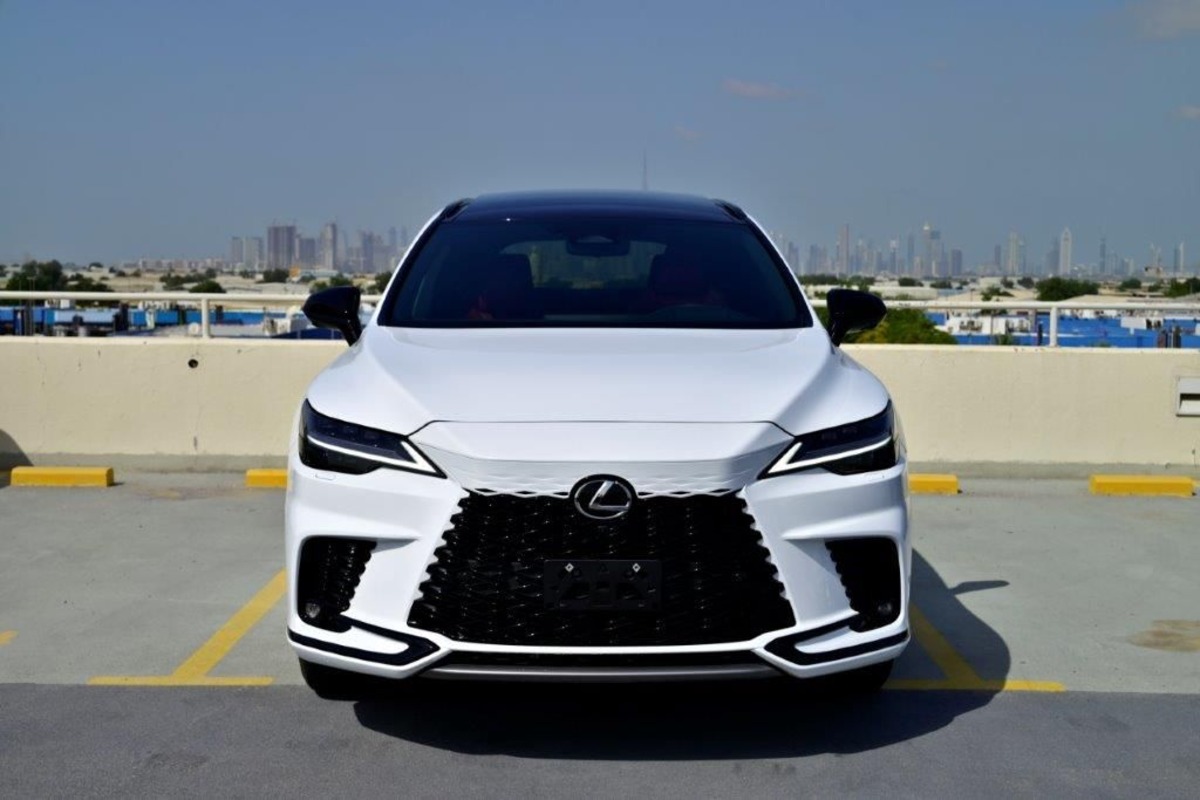
This comprehensive approach to beam control ensures optimal illumination regardless of driving conditions or vehicle configuration. One of the standout features of the Lexus RX adaptive lighting system is its integration with the vehicle’s navigation system.
The system can use GPS data and map information to anticipate lighting needs before they arise. When approaching a known curve or intersection, the system can pre-adjust the beam pattern to provide optimal visibility even before the driver begins to turn.
This predictive capability represents a significant advancement in automotive lighting technology. The Lexus RX also features cornering lamps that activate automatically when turning at low speeds or when the turn signals are activated.
These additional light sources provide enhanced visibility to the sides of the vehicle, making it easier to navigate tight parking spaces and see pedestrians or obstacles that might be outside the main headlight beam.
The cornering lamps are strategically positioned to provide maximum coverage of the vehicle’s turning radius. Weather-responsive lighting in the Lexus RX includes automatic adjustment for various atmospheric conditions.
The system can detect rain, fog, or snow and automatically adjust beam patterns to optimize visibility while minimizing glare and reflection. In foggy conditions, the system creates a wider, lower beam pattern that improves road surface visibility without creating excessive scatter.
During rain, the system adjusts to reduce glare from wet pavement while maintaining adequate illumination of lane markings and road signs. The Lexus RX adaptive headlight system also includes a unique feature called “wide-view front monitor” integration, which uses cameras to provide a bird’s-eye view of the area immediately in front of the vehicle.
This system works in conjunction with the adaptive headlights to provide comprehensive visibility coverage, particularly useful when parking or maneuvering in tight spaces. The integration of camera technology with adaptive lighting creates a comprehensive visibility solution that enhances both safety and convenience.
Customization options for the Lexus RX adaptive lighting system are extensive, allowing drivers to tailor the system’s behavior to their preferences and driving style.
Through the vehicle’s infotainment system, drivers can adjust the sensitivity of the automatic high beam system, select different cornering light activation thresholds, and even customize the welcome lighting sequence that activates when approaching the vehicle. This level of customization ensures that the lighting system can be optimized for individual driving preferences and habits.
The reliability and durability of the Lexus RX adaptive lighting system reflect the brand’s commitment to long-term quality and customer satisfaction. The system is designed to provide years of trouble-free operation with minimal maintenance requirements.
The LED light sources are rated for the life of the vehicle, and the mechanical components are built to withstand the rigors of daily driving in various weather conditions.
5 Cars with Static Headlights
These conventional headlight systems rely on simple halogen or basic LED bulbs mounted in fixed housings that provide unchanging beam patterns regardless of driving conditions or road geometry.
Their straightforward design offers reliable illumination with minimal electronic complexity, using traditional reflector or projector housings that cast predetermined light patterns without any adaptive capabilities.
The static nature means drivers must manually switch between high and low beams, with no automatic adjustment for steering input or traffic conditions, requiring constant attention to avoid blinding oncoming vehicles.
While these systems lack the sophisticated features of adaptive technology, they provide dependable basic illumination with lower maintenance costs and simpler replacement procedures.
Modern halogen bulbs can deliver up to 220 percent increased performance compared to standard options, though they remain fixed in their beam direction.
These vehicles require drivers to rely on traditional driving techniques for nighttime visibility, manually managing high beams and accepting reduced illumination around curves and hills.
1. Honda Civic (2024-2025)
The Honda Civic continues to set the standard for practical, reliable transportation with its excellent static LED headlight system that provides outstanding visibility and value.
Honda’s approach to static lighting in the Civic focuses on delivering maximum performance and reliability through thoughtful engineering and high-quality components.
The result is a lighting system that rivals many more expensive vehicles in terms of illumination quality while maintaining Honda’s reputation for long-term durability and low ownership costs.
The Honda Civic’s static LED headlight system features a sophisticated multi-reflector design that maximizes light output and distribution. The headlight housing incorporates multiple LED elements arranged in a specific pattern to create an optimal beam pattern that provides excellent visibility at both short and long distances.
The low beam pattern is designed to illuminate the road surface directly ahead of the vehicle while providing adequate side illumination for detecting pedestrians and obstacles. The high beam pattern extends the illumination distance significantly, allowing drivers to see potential hazards well in advance.
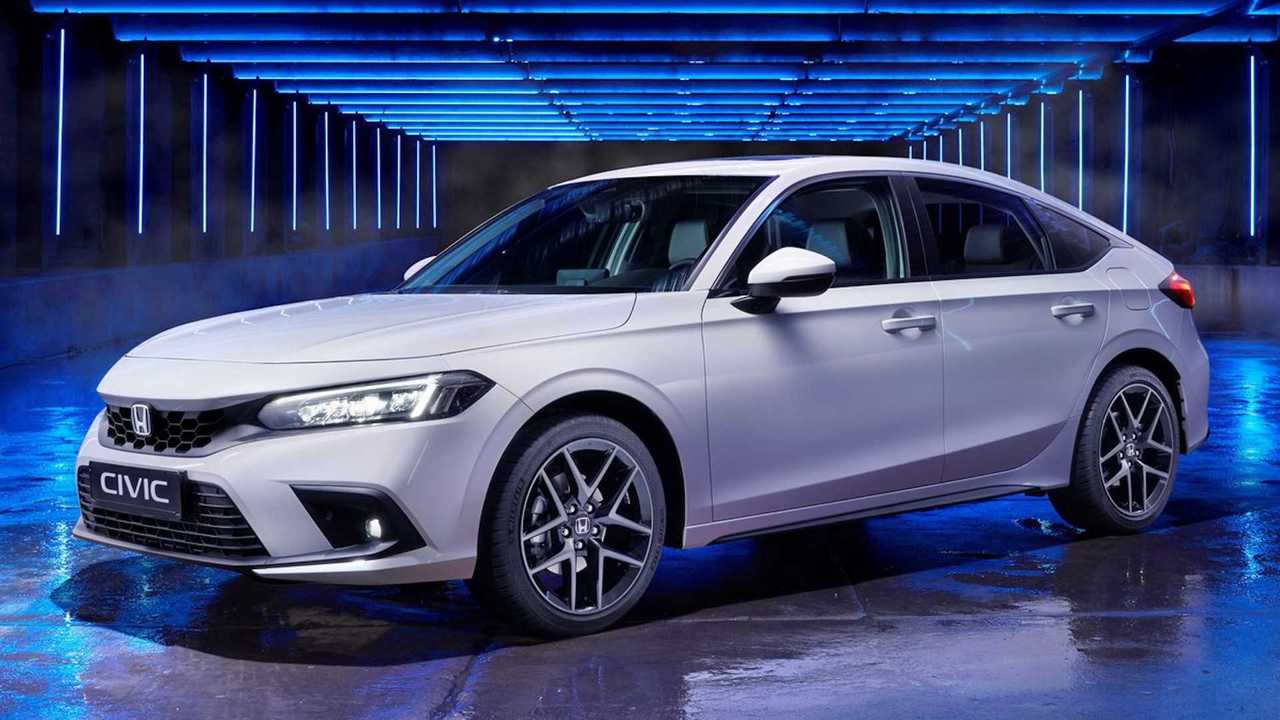
One of the most impressive aspects of the Honda Civic’s static headlight system is its consistency and reliability. Unlike adaptive systems that rely on motors, sensors, and complex control algorithms, the Civic’s static system has fewer components that can fail or require maintenance.
This simplicity translates to lower long-term ownership costs and greater reliability, which aligns perfectly with Honda’s reputation for building vehicles that provide years of trouble-free operation.
The LED technology used in the Honda Civic’s headlights provides several advantages over traditional halogen bulbs. LED lights produce a brighter, whiter light that more closely resembles natural daylight, improving color recognition and reducing eye strain during nighttime driving.
The instant-on capability of LED lights means they reach full brightness immediately when activated, providing immediate illumination without the warm-up period required by some other lighting technologies.
Energy efficiency is another significant advantage of the Honda Civic’s LED headlight system. The LED lights consume significantly less power than traditional halogen bulbs while producing more light output.
This efficiency reduces the load on the vehicle’s electrical system and can contribute to improved fuel economy, particularly in hybrid versions of the Civic. The reduced power consumption also means less heat generation, which helps extend the life of the headlight housing and surrounding components.
The Honda Civic’s headlight system also includes thoughtful design elements that enhance both functionality and aesthetics. The headlight housing is designed to resist fogging and water intrusion, ensuring consistent performance in various weather conditions.
The lens design incorporates anti-glare properties that help reduce reflection and scatter, providing cleaner light output that’s easier on the eyes of both the driver and oncoming traffic.
Maintenance of the Honda Civic’s static LED headlight system is minimal, with the LED elements rated to last for the life of the vehicle under normal operating conditions.
This longevity eliminates the need for regular bulb replacements and reduces the total cost of ownership. When maintenance is required, the modular design of the system makes service straightforward and cost-effective. The Honda Civic’s static headlight system provides excellent performance in various driving conditions.
The beam pattern is optimized for both city and highway driving, providing adequate illumination for navigating urban environments while extending far enough ahead for safe highway travel. The system performs well in adverse weather conditions, with the LED lights providing good penetration through rain and fog.
2. Toyota Corolla (2024-2025)
The Toyota Corolla represents the pinnacle of practical automotive lighting design, featuring a static LED headlight system that delivers exceptional performance, reliability, and value.
Toyota’s engineering philosophy for the Corolla’s lighting system emphasizes long-term durability and consistent performance over complex features, resulting in a system that provides excellent visibility while maintaining the legendary Toyota reliability that has made the Corolla one of the best-selling cars in automotive history.
Toyota’s approach to static lighting in the Corolla focuses on optimizing the fundamental aspects of automotive illumination: beam pattern, light output, and durability.
The headlight system features a carefully designed reflector housing that maximizes the efficiency of the LED light sources while creating an optimal beam pattern for safe nighttime driving. The low beam pattern provides excellent forward illumination while maintaining a sharp cutoff line that prevents glare for oncoming drivers.
The LED technology in the Toyota Corolla’s headlight system represents a significant advancement over the halogen bulbs used in previous generations.
The LED lights produce approximately three times more light output than comparable halogen bulbs while consuming less power and generating less heat.
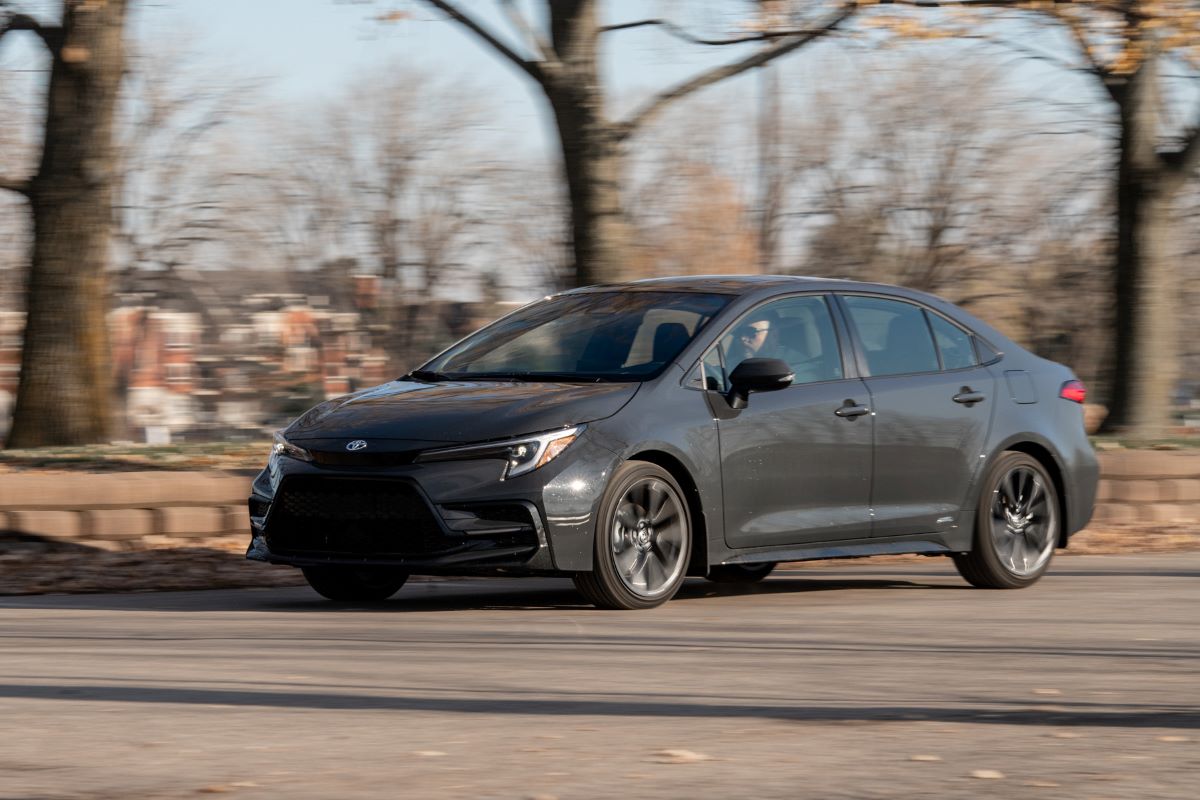
This improved efficiency contributes to better fuel economy and reduces the load on the vehicle’s electrical system, particularly important in hybrid versions of the Corolla.
One of the most notable characteristics of the Toyota Corolla’s static headlight system is its exceptional longevity. The LED elements are designed to last for the life of the vehicle, with Toyota engineering them to withstand the thermal cycling, vibration, and environmental conditions encountered in normal automotive use.
This longevity eliminates the need for regular bulb replacements and significantly reduces the total cost of ownership over the vehicle’s lifetime. The beam pattern optimization in the Toyota Corolla’s headlight system is particularly impressive for a vehicle in this price range.
The low beam pattern provides excellent illumination of the road surface directly ahead while also providing adequate side illumination for detecting pedestrians, cyclists, and other potential hazards.
The high beam pattern extends the illumination distance significantly, allowing drivers to see potential hazards well in advance when driving on dark roads. Weather performance is another strength of the Toyota Corolla’s static headlight system.
The LED lights provide excellent penetration through rain, fog, and snow, maintaining good visibility in adverse conditions. The headlight housing is designed to resist fogging and water intrusion, ensuring consistent performance regardless of weather conditions.
The anti-glare properties of the lens design help reduce reflection from wet road surfaces, improving visibility during rainy conditions. The Toyota Corolla’s headlight system also incorporates thoughtful design elements that enhance both functionality and aesthetics.
The headlight housing integrates seamlessly with the vehicle’s overall design language while providing practical benefits such as improved aerodynamics and reduced wind noise. The LED elements are arranged in an attractive pattern that provides a distinctive lighting signature while maintaining optimal functionality.
Installation and maintenance of the Toyota Corolla’s static headlight system are straightforward and cost-effective. The modular design allows for easy service when required, and the robust construction ensures that maintenance requirements are minimal.
The system is designed to withstand the rigors of daily driving in various climates and road conditions, providing consistent performance throughout the vehicle’s lifetime.
The Toyota Corolla’s static headlight system provides excellent value for money, delivering performance that rivals much more expensive vehicles while maintaining the affordability that has made the Corolla accessible to millions of drivers worldwide.
This combination of performance, reliability, and value makes the Corolla an excellent choice for drivers who want advanced lighting technology without the complexity and cost of adaptive systems.
3. Mazda CX-5 (2024-2025)
The Mazda CX-5 showcases how static LED headlight technology can be elevated to near-premium levels through careful engineering and attention to detail.
Mazda’s approach to lighting design in the CX-5 reflects the company’s philosophy of creating vehicles that provide a premium experience at an accessible price point.
The result is a static headlight system that delivers exceptional performance while maintaining the reliability and simplicity that many drivers prefer over more complex adaptive systems.
Mazda’s engineers have optimized the CX-5’s static headlight system to provide what they call “human-centric” lighting, focusing on creating illumination that works in harmony with human vision and perception.
The headlight system features a sophisticated multi-projector design that creates a precise beam pattern with excellent cutoff characteristics. This design minimizes glare for oncoming drivers while maximizing useful illumination for the CX-5’s driver and passengers.
The LED technology in the Mazda CX-5’s headlight system represents a significant advancement in automotive lighting efficiency and quality. The system uses high-quality LED elements that produce a bright, white light with excellent color rendering properties.
This improved color rendering helps drivers better distinguish between different objects and surfaces, particularly important when driving in challenging conditions such as construction zones or areas with poor road markings.
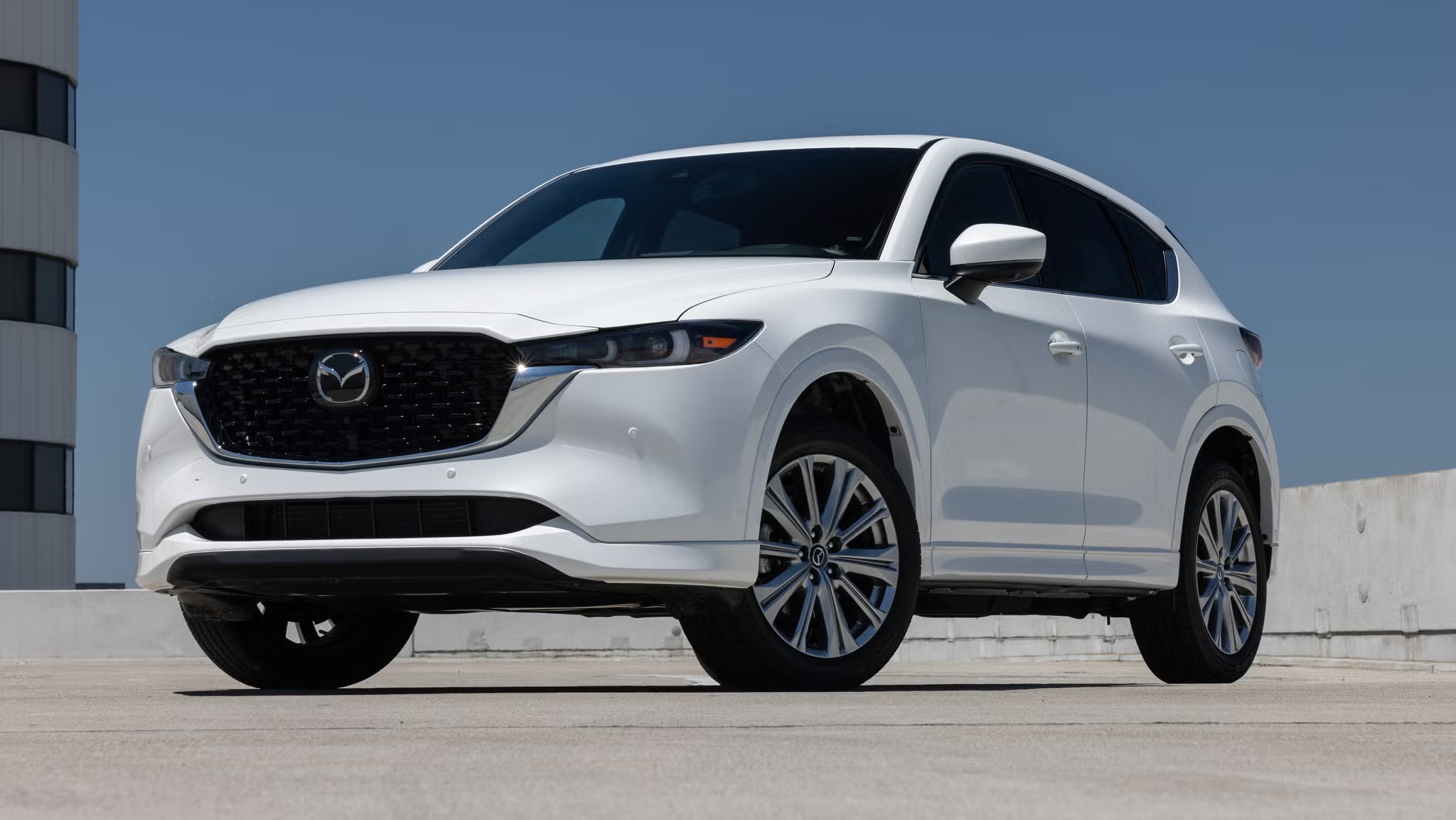
One of the standout features of the Mazda CX-5’s static headlight system is its exceptional beam pattern optimization. The low beam pattern provides excellent forward illumination while maintaining a sharp, clean cutoff line that prevents glare for oncoming traffic.
The beam pattern also includes well-designed side illumination that helps drivers detect pedestrians, cyclists, and other potential hazards that might be outside the main forward beam.
This comprehensive approach to illumination coverage enhances safety without relying on complex adaptive systems. The high beam performance of the Mazda CX-5’s static headlight system is particularly impressive, providing extended illumination distance that allows drivers to see potential hazards well in advance.
The high beam pattern is designed to provide maximum forward illumination while maintaining good side coverage, ensuring that drivers can detect hazards that might be approaching the roadway from either side.
The transition between low and high beams is smooth and immediate, providing consistent illumination during beam switching. Weather performance is another area where the Mazda CX-5’s static headlight system excels.
The LED lights provide excellent penetration through rain, fog, and snow, maintaining good visibility in adverse conditions. The headlight housing is designed with advanced sealing technology that prevents water intrusion and fogging, ensuring consistent performance regardless of weather conditions.
The lens design incorporates properties that help reduce glare and reflection from wet road surfaces. The durability and reliability of the Mazda CX-5’s static headlight system reflect Mazda’s commitment to building vehicles that provide years of trouble-free operation.
The LED elements are designed to withstand the thermal cycling, vibration, and environmental conditions encountered in normal automotive use.
The robust construction of the headlight housing and mounting system ensures that the lights maintain proper alignment and performance throughout the vehicle’s lifetime.
Aesthetic integration is another strength of the Mazda CX-5’s headlight system. The lights are designed to complement the vehicle’s sleek, modern styling while providing optimal functionality.
The LED elements are arranged in an attractive pattern that creates a distinctive lighting signature, helping to establish the CX-5’s identity on the road. The integration of the headlights with the overall vehicle design creates a cohesive, sophisticated appearance.
The Mazda CX-5’s static headlight system also incorporates energy-efficient design principles that contribute to the vehicle’s overall efficiency. The LED lights consume less power than traditional lighting systems while providing superior light output.
This efficiency reduces the load on the vehicle’s electrical system and can contribute to improved fuel economy, particularly important in an era of increasing environmental consciousness and rising fuel costs.
4. Subaru Outback (2024-2025)
The Subaru Outback has earned recognition for featuring one of the best static headlight systems available in the adventure-oriented SUV segment. 2025 Subaru Ascent | Headlight Rating: Good | U.S. News Safety Score: 9.6/10 2025 Subaru Forester | Headlight Rating: Good | U.S. News Safety Score: 9.2/10 2025 Subaru Solterra | Headlight Rating: Good | U.S. News Safety Score: 9.8 This recognition from U.S. News reflects the exceptional quality and performance of Subaru’s approach to static lighting technology across their vehicle lineup, with the Outback representing the pinnacle of this engineering excellence.
Subaru’s approach to static headlight design in the Outback focuses on providing maximum visibility and reliability for drivers who frequently venture off the beaten path.
The company’s understanding that Outback owners often drive in challenging conditions such as remote mountain roads, unpaved trails, and adverse weather conditions has influenced every aspect of the headlight system’s design.
The result is a lighting system that provides exceptional performance and durability in the most demanding driving scenarios. The Subaru Outback’s static LED headlight system features a sophisticated multi-projector design that creates an exceptionally wide and uniform beam pattern.
This design is particularly beneficial for off-road and adventure driving, where peripheral vision and the ability to spot potential hazards to the sides of the vehicle are crucial for safety.
The beam pattern provides excellent illumination of the road surface while also extending coverage to the sides of the vehicle, helping drivers navigate narrow trails and spot wildlife or other obstacles.
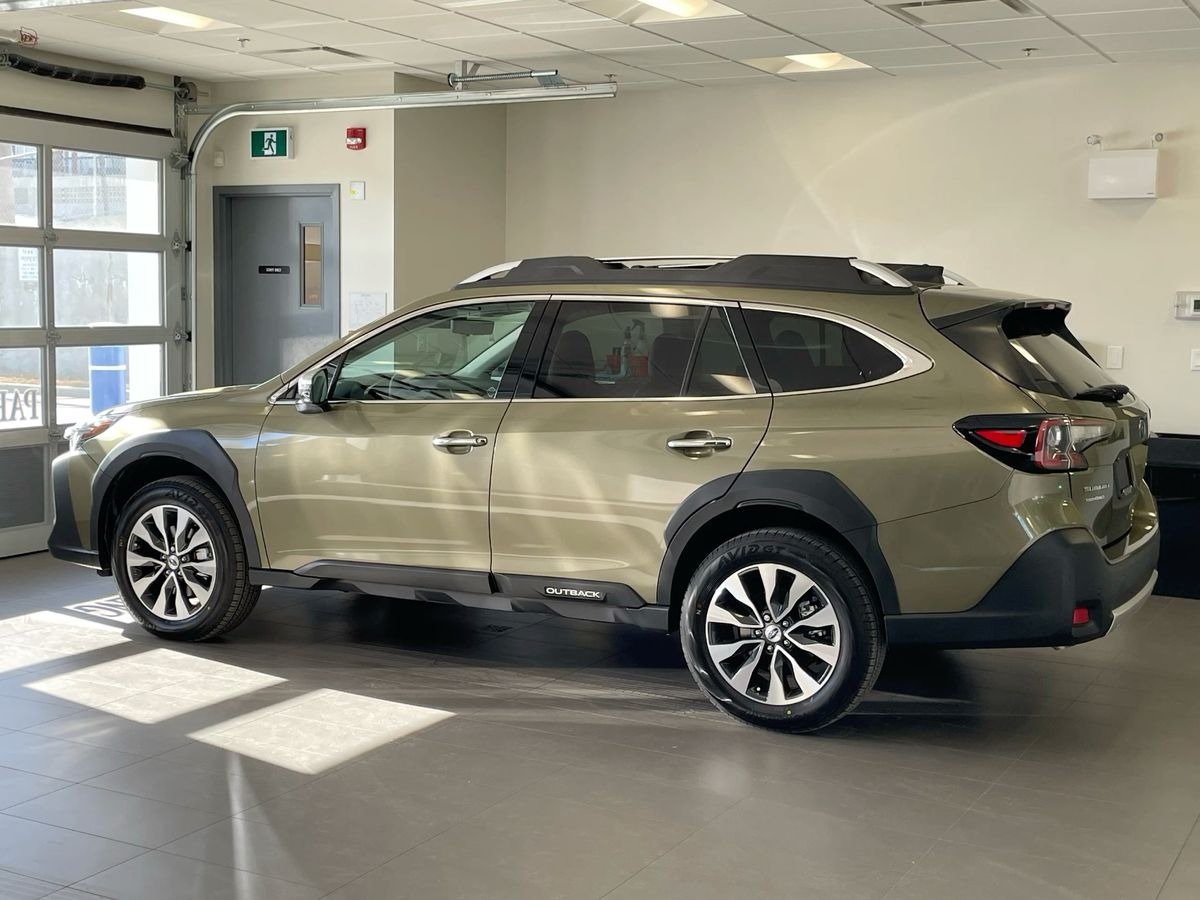
The LED technology used in the Subaru Outback’s headlight system is specifically chosen for its ability to perform consistently in extreme conditions.
The LED elements are rated to operate effectively in temperatures ranging from -40°F to 185°F, ensuring reliable performance whether driving through a Minnesota winter or a Death Valley summer.
This temperature tolerance is particularly important for adventure-oriented vehicles that may encounter extreme environmental conditions. One of the most impressive aspects of the Subaru Outback’s static headlight system is its exceptional durability and resistance to vibration and impact.
The headlight housing and mounting system are designed to withstand the rigors of off-road driving, including washboard roads, rock impacts, and the constant vibration associated with rough terrain travel.
The robust construction ensures that the headlights maintain proper alignment and performance even after years of adventure driving. The beam pattern optimization in the Subaru Outback’s headlight system is particularly noteworthy for its ability to illuminate both the road surface and elevated obstacles such as overhanging branches, road signs, and bridge structures.
This comprehensive illumination coverage is essential for safe driving in mountainous terrain and heavily forested areas where traditional headlights might miss important visual cues.
The system provides excellent depth perception and object recognition capabilities that are crucial for safe night driving in challenging environments.
Weather performance is another area where the Subaru Outback’s static headlight system excels. The LED lights provide excellent penetration through rain, snow, and fog, maintaining good visibility in the adverse weather conditions that Outback owners frequently encounter.
The headlight housing incorporates advanced drainage and ventilation systems that prevent water accumulation and fogging, ensuring consistent performance in wet conditions.
The Subaru Outback’s headlight system also includes thoughtful design elements that enhance functionality for outdoor enthusiasts. The headlight housing is designed to be easily cleanable, allowing owners to quickly remove mud, dust, and debris that might accumulate during off-road adventures.
The lens design incorporates scratch-resistant properties that help maintain optical clarity even after exposure to sand, gravel, and other abrasive materials.
The reliability and serviceability of the Subaru Outback’s static headlight system reflect the company’s commitment to building vehicles that can be maintained and repaired anywhere in the world.
The modular design allows for straightforward service and replacement of components when necessary, and the robust construction ensures that maintenance requirements are minimal even under demanding use conditions.
5. Nissan Altima (2024-2025)
The Nissan Altima represents excellent value in automotive lighting technology, featuring a well-engineered static LED headlight system that delivers impressive performance at an accessible price point.
Nissan’s approach to lighting design in the Altima focuses on providing maximum visibility and safety while maintaining the reliability and simplicity that many drivers prefer.
The result is a lighting system that competes effectively with much more expensive vehicles while offering the peace of mind that comes with proven, straightforward technology.
Nissan’s engineering team has optimized the Altima’s static headlight system to provide what they call “intelligent illumination” through careful attention to beam pattern design and light distribution.
The headlight system features a sophisticated reflector design that maximizes the efficiency of the LED light sources while creating a beam pattern that provides excellent visibility for both city and highway driving.
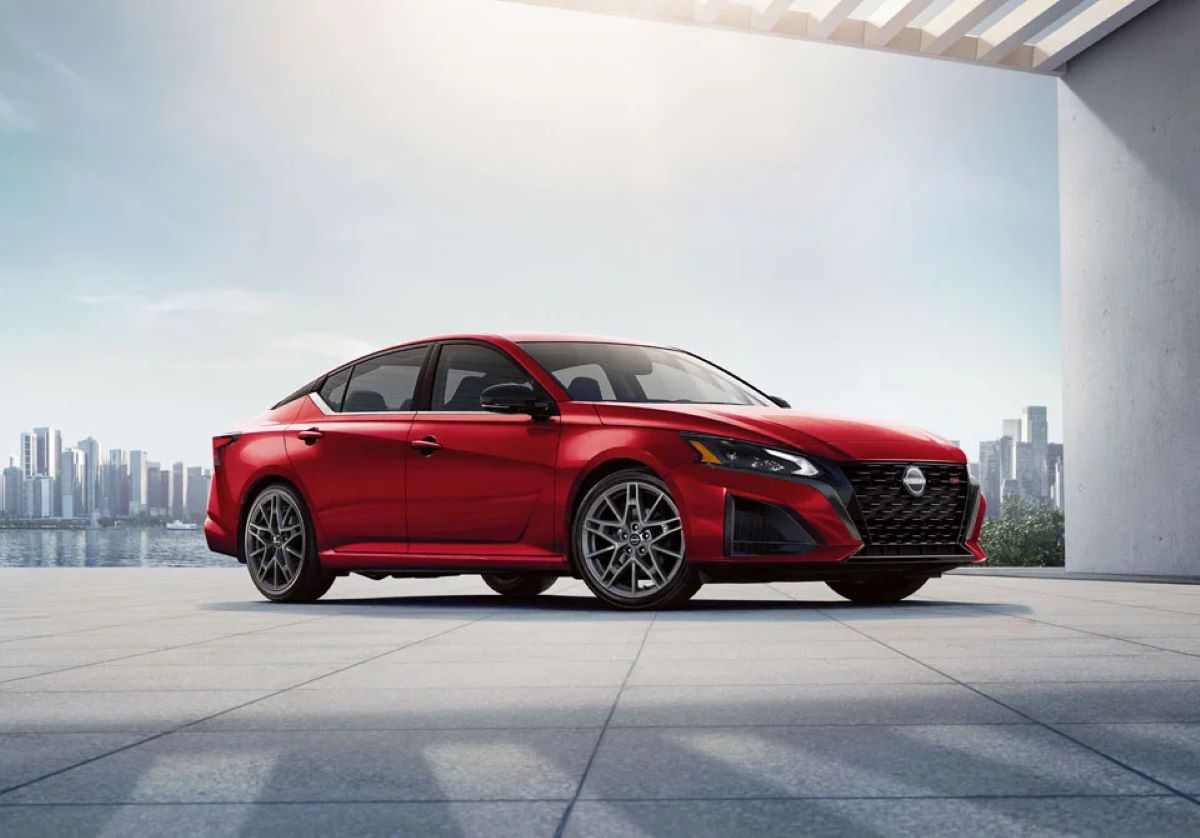
The low beam pattern offers superior forward illumination while maintaining proper cutoff characteristics to prevent glare for oncoming drivers. The LED technology in the Nissan Altima’s headlight system represents a significant upgrade over traditional halogen lighting systems.
The LED elements produce a bright, white light that closely mimics natural daylight, improving color recognition and reducing eye strain during extended nighttime driving.
The improved color rendering helps drivers better distinguish between different road surfaces, lane markings, and potential hazards, particularly important in urban environments with complex lighting conditions. One of the most notable features of the Nissan Altima’s static headlight system is its exceptional beam pattern uniformity.
The lighting engineers have carefully designed the reflector geometry to eliminate hot spots and dark areas in the beam pattern, creating smooth, even illumination across the entire field of view. This uniformity reduces eye fatigue and improves the ability to detect subtle changes in road conditions, surface textures, and potential
Also Read: 5 Hybrids With Lowest Cold-start Fuel Use And 5 Guzzlers To Avoid

